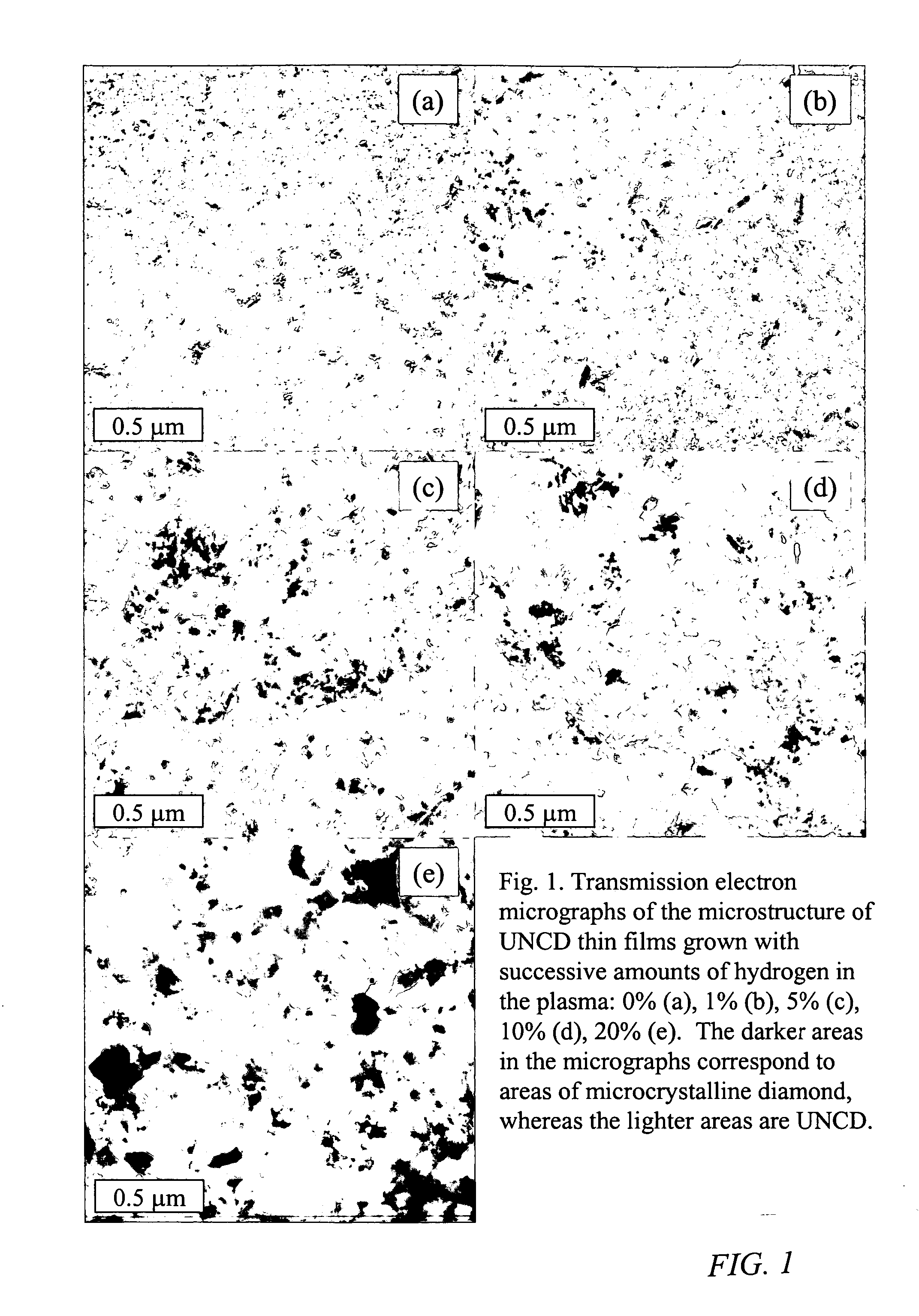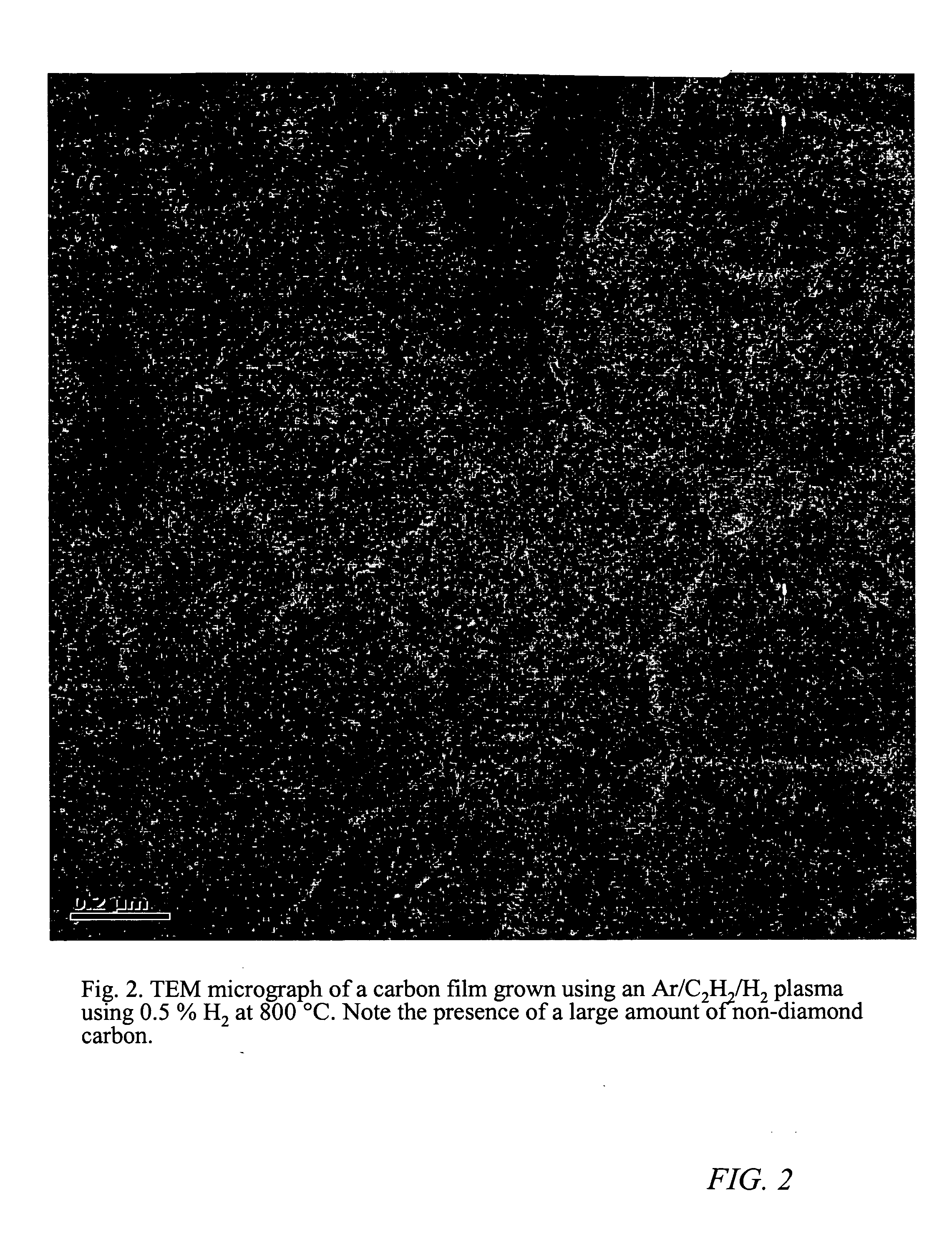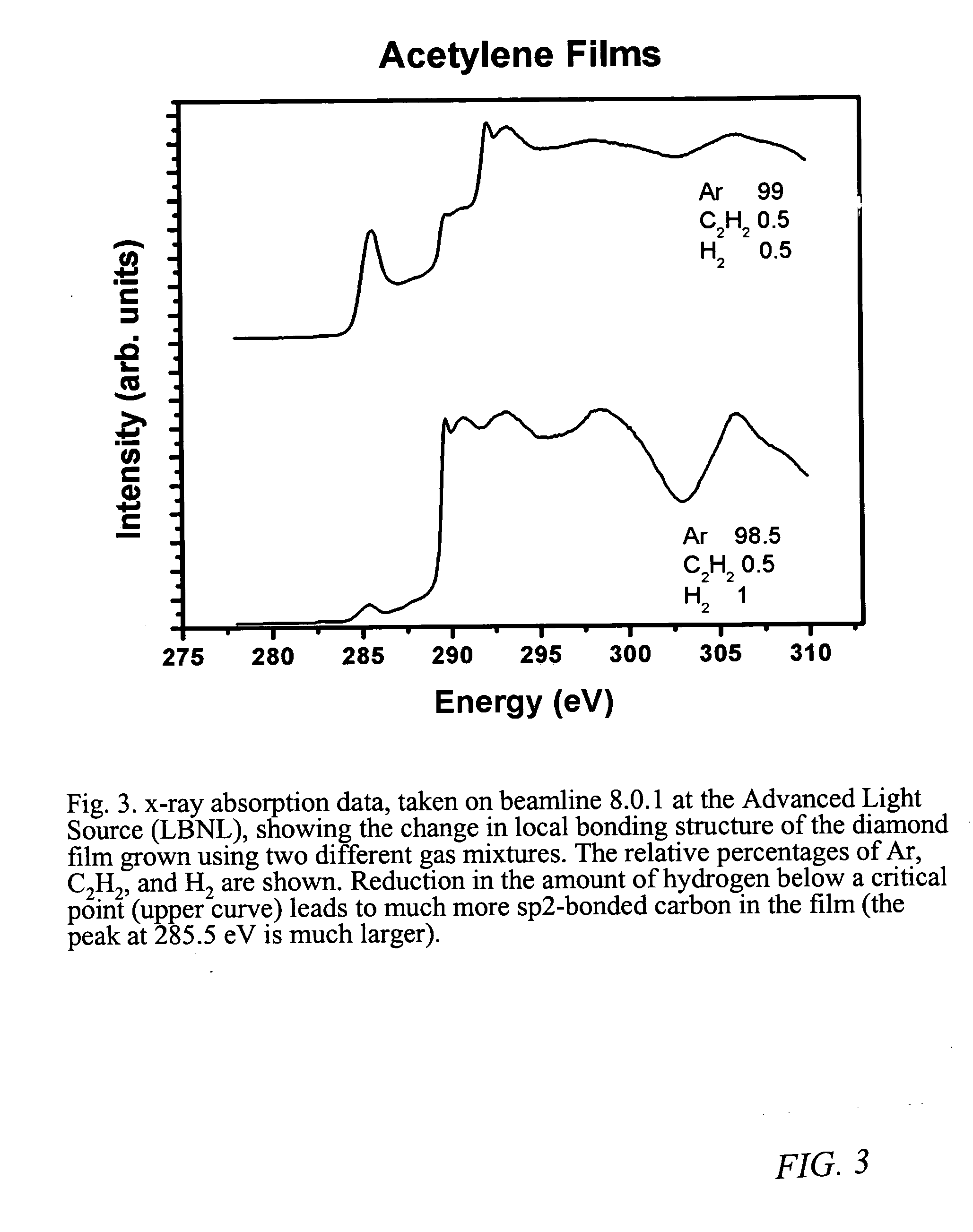Method to grow carbon thin films consisting entirely of diamond grains 3-5 nm in size and high-energy grain boundaries
a carbon thin film, diamond grain technology, applied in the direction of polycrystalline material growth, chemically reactive gas growth, pressurized chemical process, etc., can solve the problems of limiting their commercialization, increasing the grain size of these films with film thickness, and many companies that tried to commercialize mcd in the early 90's failed to realize the effect of mcd commercialization
- Summary
- Abstract
- Description
- Claims
- Application Information
AI Technical Summary
Benefits of technology
Problems solved by technology
Method used
Image
Examples
Embodiment Construction
[0026] The Innovative Plasma Systems GmbH (IPLAS) microwave plasma system has allowed the inventors to examine carbon films grown using acetylene-based (instead of methane-based) plasmas, i.e. using Ar / C2H2 / H2 gas mixtures. In methane plasmas, the methane thermally decomposes to C2H2 and H2, so that a 99 / 1 plasma in facts contains 1.5% H2 (see FIG. 1a) that comes from a combination of the added hydrogen and from the methane. Thus, the amount of H2 in the plasma can be reduced below 1.5% using acetylene-based plasmas.
[0027] Recent TEM data obtained from a film grown using a 99% Ar / 1% C2H2 / 0.5% H2 plasma at 800° C. is shown in FIG. 2, which shows a very different morphology compared with normal UNCD films (FIG. 1a) and illustrates that even with C2H2 the hydrogen concentrations are very important as the material of FIG. 2 is unsatisfactory.
[0028]FIG. 3 shows x-ray absorption data obtained from two samples grown using the same parameters in every way except the percentage Near Edge X...
PUM
 Login to View More
Login to View More Abstract
Description
Claims
Application Information
 Login to View More
Login to View More - R&D
- Intellectual Property
- Life Sciences
- Materials
- Tech Scout
- Unparalleled Data Quality
- Higher Quality Content
- 60% Fewer Hallucinations
Browse by: Latest US Patents, China's latest patents, Technical Efficacy Thesaurus, Application Domain, Technology Topic, Popular Technical Reports.
© 2025 PatSnap. All rights reserved.Legal|Privacy policy|Modern Slavery Act Transparency Statement|Sitemap|About US| Contact US: help@patsnap.com



